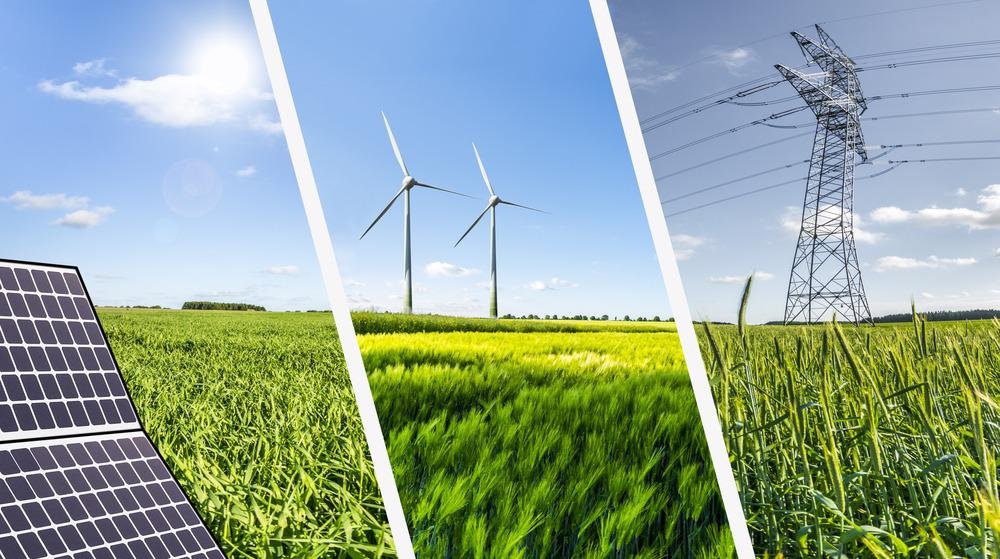A study published in the journal Energy & Fuels explored the synthesis of metal-rich high-porosity nickel phosphide nanoflakes injected with Vanadium (VNi12P5) using a singular step solvothermal approach for the formation of highly effective asymmetrical supercapacitors (ASCs) with great potential for renewable energy storage systems.

Study: Boosting the Supercapacitive Performance via Incorporation of Vanadium in Nickel Phosphide Nanoflakes: A High-Performance Flexible Renewable Energy Storage Device. Image Credit: FotoIdee/Shutterstock.com
The Growing Need for Effective Energy Storage Solutions
Rapidly developing electronic systems necessitate highly effective energy storing solutions, wherein supercapacitors (SCs) with great energy density, rapid charging/discharging capability, and extended cyclic lifespan have been proven to be viable sources of power. As a result, significant attempts have been directed towards the creation of elastic energy storing devices recently owing to their usability in different electronic devices such as wearable gadgets, roll-up screens, mobile phones, electronic papers, laptops, and so on.
Since SCs provide a high-power density, a quick charging/discharging mechanism, and reliability over a long period, they have become a desirable technology for many uses. Nonetheless, SCs are generally comprised of a carbon-based framework and suffer from the major flaw of supplying poor energy density in present industrial systems owing to a small potential range and restricted electrolytically activated surface function.
To address this problem, asymmetrical supercapacitors (ASCs) have been effectively built using various cathode and anode materials during the past few years to control energy density with no disruptions to power density.
Phosphides of Transition Metals for Making Electrodes
To improve the voltage range and total capacitance of SCs, scientists are now focusing on compounds based on transition metals for cathodes and carbonaceous composites for anodes. Transition metal phosphides (TMPs) are ecologically safe, kinetically advantageous for quicker charge movement, and maintainable at elevated applied potentials owing to their rich valence states, weak ionic bonding, and better electrical conductance.
As a result, TMPs have arisen as novel battery-type electrode substances and received interest because they may enhance the specific capacity of gadgets while also having higher rate capabilities as opposed to various other electrochemically active substances.
Doping can Improve Stability of Electrodes
TMPx may be classified into phosphoric stages (where x > 1, such as CuP2, NiP3, and CoP3) and metallic stages (x ≤ 1, such as Ni2P, Cu3P, and Ni12P5) based on the proportion of metal to phosphorous. Metallic phosphides with phosphor stages exhibit low band gap semiconductive capabilities and are used as a possible material for negative electrodes for the purpose of storing Li or Na, resulting in greater hypothetical capacities. Moreover, TMPs rich with metals have extensive metallic coupling and have high electrical conductance and chemical robustness, which may increase their electrolytic characteristics.
Aside from creating TMPs rich in metals, doping with supplementary metallic centers may boost the effectiveness of electrode material even more. It is well understood that the total charge transference between the doped metallic component and host center affects the electronic landscape, which is expected to minimize resistant charging/discharging kinetics and increase long-term durability throughout electrolytic processes.
How did the Researchers Apply these Concepts?
Despite the significant advances in material properties for improving the electrolytic capabilities of TMPs, additional development through makeup prediction and architectural manipulation with suitable electrokinetics represents a significant barrier for implementation in commercial devices.
In this study, vanadium was directly added to metal-rich TMP (Ni12P5) nanoparticles, that behaves as a conciliatory and dynamic component to improve porosity and electrolytic behavior via a one-step solvothermal procedure wherein high-porosity nanofilms of V-doped Ni12P5 (VNi12P5) were logically developed on pliable carbon cloth (CC) as a cathode for highly effective ASCs.
Key Findings of the Study
The electrolytic outcomes showed that incorporating V atoms within the Ni12P5 crystalline structure can improve the charge storing potential of the VNi12P5 nanoparticles adorned on a pliable CC framework with an elevated specific capacitance and significant cycle durability with capacitive retention of 98.5 percent after intensive cycling.
Owing to the doping-mediated partially positive polarization produced on the metallic centers of the functional component, the related device exhibits considerable cycling stability for up to 11,000 charging/discharging cycles.
The experimental energy system developed has proved its capability for using sustainable energy, like solar power, to illuminate a red LED and power mechanical motors, with the goal of developing a sustainable vehicle industry. As a result, the study emphasized the significance of doping in tailoring the characteristics of transition metal phosphides to obtain excellent electrochemical performance and build a viable flexible integrated energy storing system.
Reference
Afshan, M., Kumar, S. et al. (2022). Boosting the Supercapacitive Performance via Incorporation of Vanadium in Nickel Phosphide Nanoflakes: A High-Performance Flexible Renewable Energy Storage Device. Energy & Fuels. Available at: https://pubs.acs.org/doi/10.1021/acs.energyfuels.2c00315.
Disclaimer: The views expressed here are those of the author expressed in their private capacity and do not necessarily represent the views of AZoM.com Limited T/A AZoNetwork the owner and operator of this website. This disclaimer forms part of the Terms and conditions of use of this website.